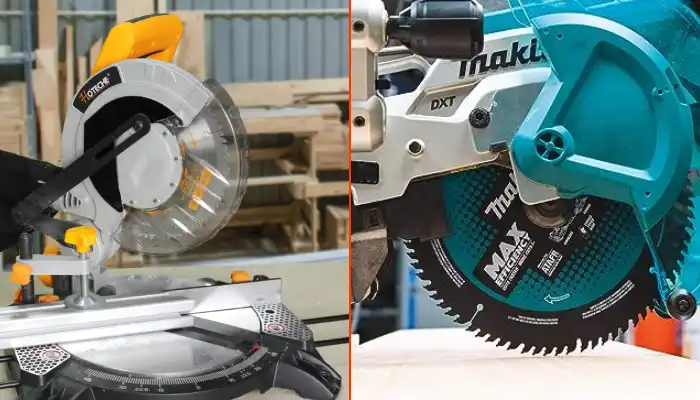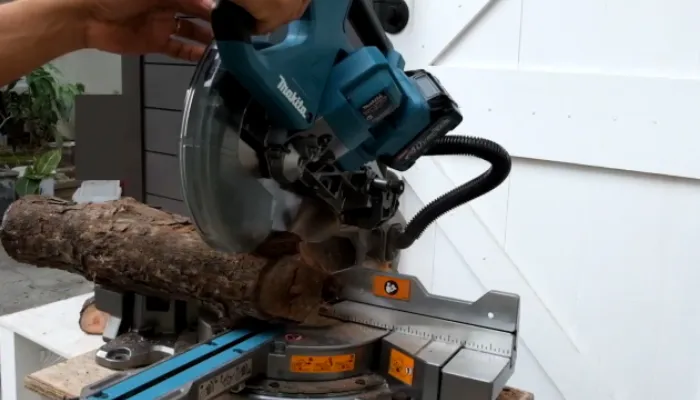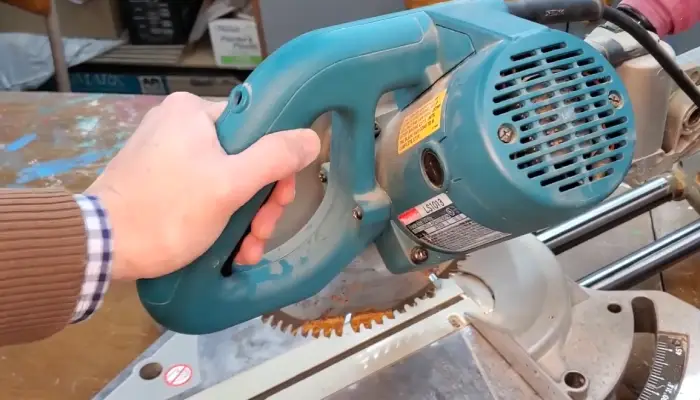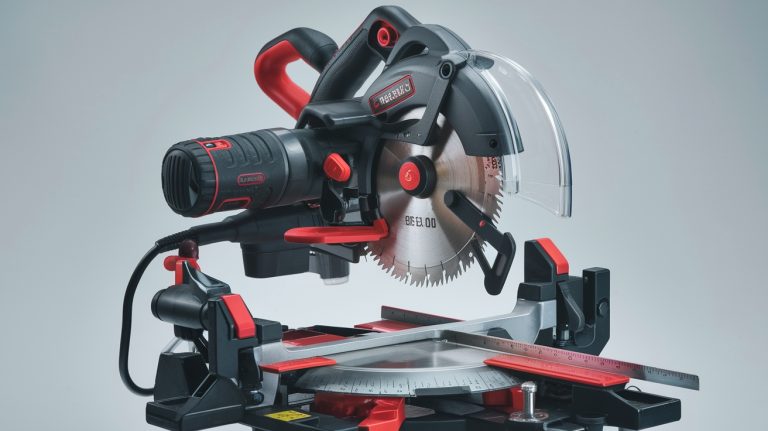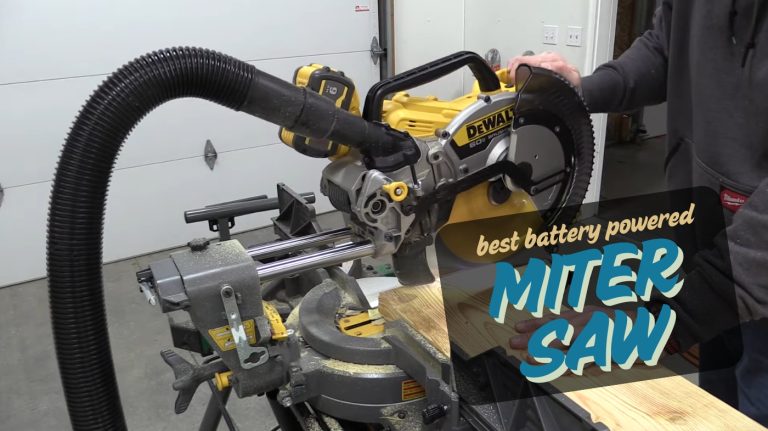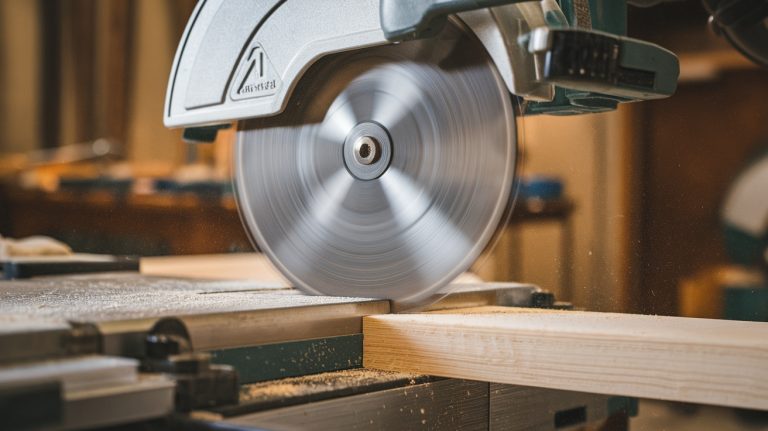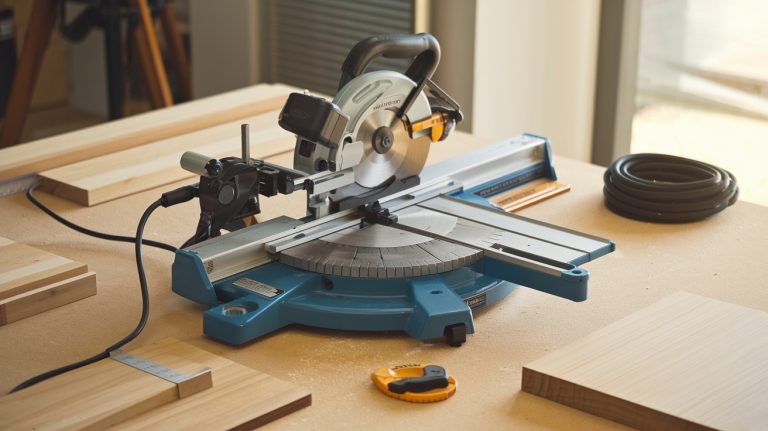80 vs 100 Tooth Miter Saw Blade: 5 Major Differences
Did you know that choosing the right miter saw blade can significantly impact the quality and effectiveness of your DIY projects? Regarding miter saw blades, the number of teeth is crucial in determining the type of cuts you can achieve. The 80-tooth and 100-tooth miter saw blades differ significantly in some ways.
With 80 teeth, a miter saw blade balances speed and precision, making it ideal for general-purpose cutting tasks. Conversely, a 100-tooth miter saw blade offers a smoother and more polished finish, making it suitable for delicate and intricate woodworking projects.
Today we will explore the differences between 80 & 100-tooth miter saw blades, helping you make an informed decision for your next woodworking project. So, let’s explore the differences.
Five Major Differences Between 80 and 100-Tooth Miter Saw Blades
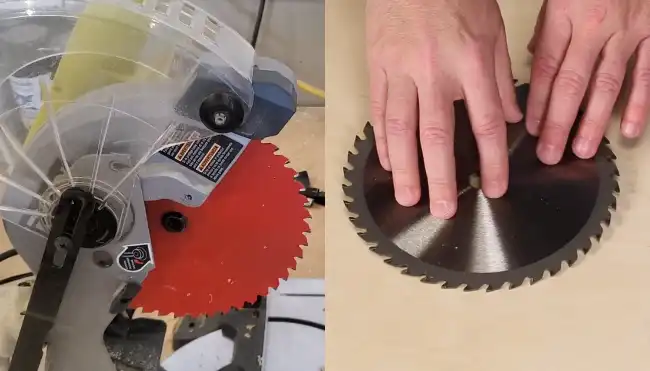
When comparing 80 and 100-tooth miter saw blades, there are five major differences that you should consider.
- Tooth count
- Material suitability
- Cutting performance
- Chipping and splintering
- Price range
Let’s discuss in more detail:
#1 Tooth Count
An 80-tooth miter saw blade contains 80 cutting teeth on the blade’s circumference, whereas a 100-tooth miter saw blade has 100 cutting teeth, providing a higher tooth count than the 80-tooth blade.
#2 Material Suitability
When choosing the ideal blade for your woodworking projects, consider the material’s suitability.
An 80-tooth blade is a versatile option that can handle a wide range of materials, making it suitable for both hardwoods and softwoods. It is well-suited for cutting furniture, cabinets, plywood, and general woodworking tasks.
Conversely, the 100-tooth blade is excellent for cutting softer melamine, aluminum, or vinyl. It offers precision and is recommended for melamine, softwood, and hardwood. The 100-tooth blade creates clean cuts, making it ideal for delicate work.
#3 Cutting Performance
The 80-tooth blade, with its decreased vibration and smooth cutting, provides a reliable performance suitable for a wide range of materials.
Alternatively, the 100-tooth blade is known for its efficient carbide, allowing clean cuts. But it may be slightly more fragile compared to the 80-tooth blade.
The increased number of teeth on the 100-tooth blade allows for smoother edges on your cuts than on 80-tooth blades. This is ideal for projects that require a polished finish and reduces the need for additional sanding or smoothing.
#4 Chipping and Splintering
Imagine your material being shredded and splintered into a thousand pieces, leaving behind a jagged mess that resembles a tornado aftermath. This is the unfortunate result you may experience when using an 80-tooth blade.
However, with a 100-tooth blade, you can expect significantly improved chipping and splintering. Here are some reasons why the 100-tooth blade is superior over 80-tooth:
- Finer teeth: The 100-tooth blade has more teeth per inch than an 80-tooth blade, allowing for a smoother and cleaner cut. This reduces the likelihood of chipping and splintering.
- Specialized design: The 100-tooth blade is designed for clean cutting compared to 80-tooth blade. It has a sharper edge and a higher tooth count, enabling it to slice through materials with precision and minimal damage.
#5 Price Range
Pricing can make a significant difference when choosing the right blade for your needs. While an 80-tooth blade may be cheaper, it may produce more tear-out and rougher cuts, leading to increased chipping and splintering in certain materials.
Meanwhile, a 100-tooth blade minimizes chipping and splintering, delivering cleaner and smoother cuts, especially in delicate materials. This improved quality may justify the higher price of a 100-tooth blade, especially if you frequently work with delicate materials or require precise cuts.
How Does a Miter Saw Blade’s TPI Affect Cutting?
Feel the exhilaration as you witness the smooth and precise cuts made by a miter saw blade, which has a high TPI, effortlessly gliding through the wood. A miter saw blade’s TPI, or teeth per inch, greatly affects its cutting performance. Here’s how:
Efficient Cross-Cuts
Miter saw blades with a higher TPI count, such as a 100-tooth blade, excel at making clean cross-cuts on wood perpendicular to the grain. The smaller teeth and greater TPI allow for finer, smoother cuts.
Finer Finish
The high TPI count of a 100-tooth miter saw blade creates smaller, more numerous teeth. This results in a finer finish on the cut surface, reducing the need for additional sanding or finishing work.
Reduced Tear-out
Many small teeth on a high TPI blade minimize tear-out or splintering on the wood surface, leaving behind clean and precise cuts.
Slower Feed Rate
A miter saw blade with a low TPI requires a higher feed rate due to the lower tooth count. This allows the teeth to engage effectively with the wood, producing accurate and fast cuts.
Compatibility with Thin Materials
A 100-tooth miter saw blade with higher TPI is ideal for cutting thin materials, as the small teeth provide excellent control and prevent damage.
Is it beneficial to have more saw teeth on a miter saw blade?
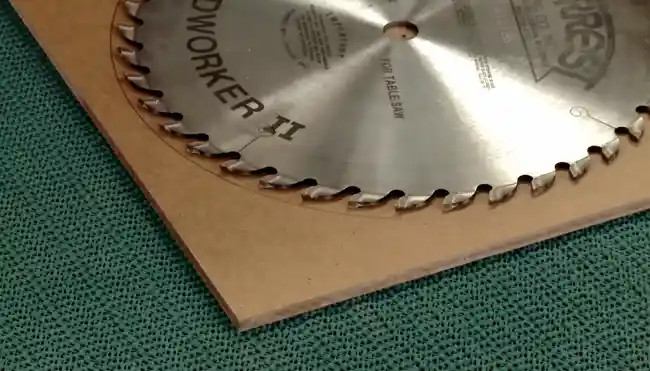
Having more teeth on a miter saw blade significantly enhances its cutting precision and the quality of the finished result. When a miter saw blade has more teeth, each tooth takes smaller bites out of the material, resulting in a smoother and cleaner cut.
This is especially important when working with delicate or expensive materials that require high precision. The increased number of teeth also reduces the risk of tear-out, which can occur when the blade tears the material fibers as it cuts.
Also, a higher tooth count allows for more efficient chip removal, preventing clogging and overheating of the blade. Therefore, if you prioritize a clean and accurate cut, opting for a miter saw blade with more teeth is the way to go.
What is an 80-tooth saw blade used for?
If you want your cuts to be as smooth as butter, an 80-tooth saw blade is like adding a dash of magic to your woodworking projects. With its finely crafted teeth, this blade is designed to deliver clean and precise cuts on various materials.
Here’s why you should consider using an 80-tooth saw blade:
- Exceptional precision: The high tooth count ensures each tooth engages with the material, resulting in finer and more accurate cuts.
- Reduced tear-out: Closely spaced teeth minimize tear-out, leaving smooth and splinter-free edges behind.
- Improved finish quality: The smaller gullets of the 80-tooth blade help prevent chip buildup, resulting in a flawless finish.
- Versatility: This blade is suitable for various applications, including cutting fine molding and double-sided veneered plywood for cabinets and furniture.
What is a 100-tooth saw blade used for?
A 100-tooth saw blade is commonly used for cutting through various DIY project materials. It provides a smooth and clean finish, making it suitable for precision cuts and delicate woodworking projects.
This particular blade is designed for cutting through plywood, oriented-strand board (OSB), and medium-density fiberboard (MDF). Its high tooth count ensures a clean finish in these materials, making it ideal for DIY projects and construction use.
Made of high-quality steel, the 100-tooth saw blade offers durability and precision while remaining cost-effective. Whether you’re working on small woodworking projects or need to make precise cuts in plywood or MDF, the 100-tooth saw blade is a reliable choice.
How many teeth per inch to cut hardwood?
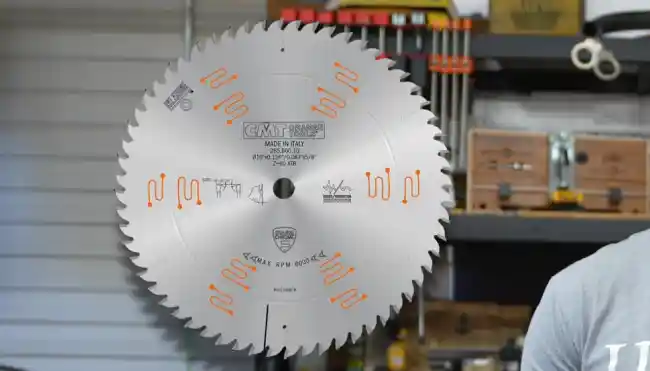
To achieve clean and precise cuts in hardwood, you’ll want to use a saw blade with a higher tooth count, typically ranging from 24 to 40 teeth per inch. The higher tooth count allows for more teeth to engage with the wood, resulting in smoother cuts and reduced tear-out.
When cutting hardwood, it’s important to consider the density and hardness of the material. A higher tooth count helps to prevent splintering and chipping, resulting in a cleaner finish. However, it’s worth noting that using a high tooth count blade may require a slower feed rate to ensure the blade doesn’t overheat.
Choosing the appropriate blade for the specific hardwood you’re working with is also important, as different hardwoods have varying densities and cutting requirements. Refer to the table below for a general guideline on tooth count recommendations for cutting different types of hardwoods:
| Hardwood Type | Tooth Count Range |
| Oak | 24-32 TPI |
| Maple | 32-40 TPI |
| Walnut | 24-40 TPI |
| Cherry | 32-40 TPI |
80 Tooth or 100 Tooth for Miter Saw Blade: Select the Proper Blade for Your Job
When choosing between an 80-tooth and 100 tooth miter saw blade, consider your specific cutting needs. While both blades offer their own advantages, the 80-tooth blade is better suited for general-purpose cutting, whereas the 100-tooth blade is ideal for making smoother and more precise cuts.
The 100-tooth blade may be unnecessary for everyday projects, but its ability to provide cleaner finishes and minimize tear-out is a valuable asset worth investing in. So, don’t hesitate to opt for the 100-tooth blade if you strive for exceptional results.

